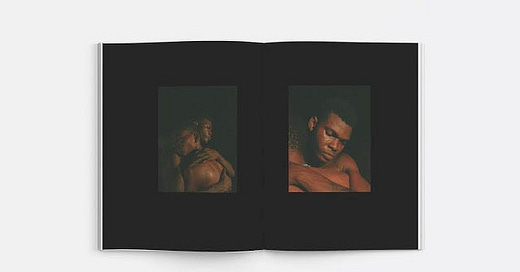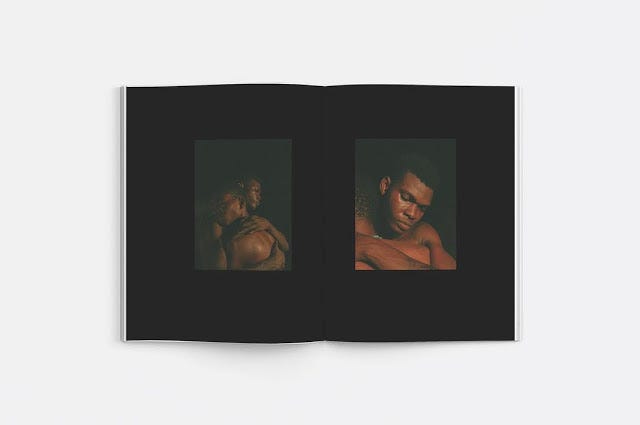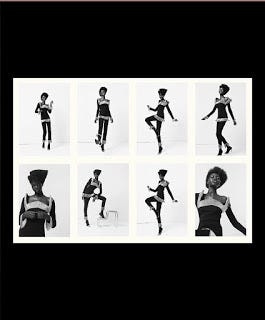Back to Black
Here at Tinted, we support the growth and education of creatives in the photography industry. BLM in the last few weeks has highlighted…
Here at Tinted, we support the growth and education of creatives in the photography industry. BLM in the last few weeks has highlighted the struggles that many black creatives face in this industry by pushing it to the forefront of the public eye.
Our platform is dedicated to the marginalised, the underrepresented, and the forgotten.
A notable name in the diaspora is the South London born Campbell Addy. A trailblazer in the fashion industry who continuously celebrates identity and blackness in his work. Challenging the norm, Addy has explored themes from masculinity and homosexuality to mental health and pop culture in fashion. Having a worldwide presence, Addy has used his visual voice to not only present a new kind of aesthetic but to also create a new narrative of black representation in art.
Whilst studying at Central Saint Martins, Campbell Addy launched his career with his publication and agency together titled Nii — a name which when translated into English means King. Aware of the adversity faced by BIPOC and the lack of diversity in the fashion industry, Addy set off from the get-go by making a mark and creating spaces for the underrepresented. He reached success quite early in his career and though fruitful, he still existed in an atmosphere clouded with micro-aggressions.
“As a black person in the fashion industry, I can tell you there’s no room for mediocrity within my art space. It has to be daring it has to be bold it has to thought provoke…”
Many artists in the creative industries face this reality and most choose to filter their work to be ‘more commercial’ however, Addy continued to document his truth and created art on his terms. He has built his platform by combining a multitude of styles and techniques.
His Work
“They were told they were very lucky and should be grateful that we had come to visit. But on the contrary, I was the lucky one. I was met with such open arms and purity that it humbled me beyond my wildest dreams. Photographing them, listening to them and engaging with them, made me realise these children are the future. They are my kin and we should protect them at all costs.”
The shot of the children is a powerful one. The connection which he shared with them at that moment is amplified by the strong eye contact held. The shot was taken on a project in Ghana — Addy’s native homeland, so the cultural bond shared between Addy and his subjects are strong. This shot is one of many which further illustrates how Addy is much more than a fashion photographer and is an artist that uses his work to emote.
Celebrity work also features heavily in Campbell Addy’s portfolio. As a fashion photographer, his work has graced many magazines and most assignments include familiar faces. One of those faces being the singer Kelela. The relationship he has with those he collaborates with shines through each photo and we learn more about the insights of each person since he takes the time to get to know them personally. This shot in particular was included in Nii Journal. In the second edition of the publication, he used photography to expand on the connections he made with other creative PoC whilst also using other types of media (including video) to dive deeper into the topic of mental health in the black community. In response to his own mental health challenges Addy used the platform to create conversations and show how trauma can present itself through different generations and even now where bigotry still exists in society.
Taken as part of Addy’s exhibition show at the Somerset House in 2019, Engender explores race and identity. This picture juxtaposes masculine strength with effeminate clothing. The image is soft and warm. It invites the viewer to imagine the person in the photo since we cannot see their face. Addy commonly uses the concept of masculinity and carries it throughout this project. His refreshing take of how he views himself and those in the LGBTQ+ community has caught the eye of the industry primarily for his authentic representation of his experiences.
Campbell Addy is a brilliant talent with a variety of projects within the fashion and art world. From his publications, model casting agency, and photography assignments, Addy is full of insights into the different parts of the industry. We are excited to invite him to our virtual event and learn from his multitude of experiences.
Race
Evidently and understandably, Race has always been a key feature in Campbell’s work. At our recent event, he admits how deliberate this decision became as he progressed his career. Being a first-generation Ghanian living in the intersection of Black-Britishness, what’s clear is that his experiences have played a huge role in guiding his work and creative-expression. The first issue of Nii Journal was produced by Campbell whilst at University. Its creation is the direct result of owning one’s racial identity. By showcasing upcoming Black photographers, he is able to adore creative works whilst, at once, holding each up for public-acclaim.
As an impulsive character, Campbell was able to recognise a lack thereof and direct his creative energy into solving that problem. Because of this the problem-based approach, Campbell’s work has always had an undertone of racial exploration. He has also played a very direct role in paving the way for other Black photographers.
Mental Health
As important a role as race plays in his work, so too does mental health. In our talk, he summarises his experiences with starting Engender as a reminder that ‘Ya’ll should never doubt yourselves.’ An admirable message and one that rings true when he continues to highlight how his initial thoughts for the project were that Somerset House simply wanted him to give him names for the project, to then later find out, no, they wanted him to lead the photography project.
What you’ll often find in his work is a coupling of the two: race and mental health. In the case of his cover with I-D which was done at a point in his career when he was starting to reach acclaim for his work. Being placed on a pedestal he decided to push back since he recognised that black creatives have always existed or rather the people who let him in the industry and the same people who didn’t let the creative before him into the industry. He combated this by paying homage to Lorna Simpson for her amazing work as a black creative.
By paying homage to Lorna Simpson, his work is able to support his mental health and that of other black creatives by highlighting that representation in the industry though lacking is progressing and that this prior lack in no way stopped the creativity of black artist from the past.
Casting
In starting Nii Journal, Campbell positioned himself in a way that resulted in regular callouts to casting agencies being on the table. He talks about this in our event and how this experience simply highlighted a lack of representation in the casting industry.
Campbell admits to being a ‘nerd’ — by this, he means that each shoot is conceptually unpacked, researched, and meticulously planned out. He talks about taking 6 to 12 months per project sometimes. This planning also extends to the models of each shoot. So, when a visual artist aims to document the black experience with specific racial requirements for models and is sent a caucasian model it’s clear that things are as they should be.
It’s because of these experiences that Nii Journal extended it’s service to Nii Agency, now doubling up in its service to tackle the lack of representation in the industry.
For more information regarding our community and any upcoming events, check out our website. Also, for the full recording of Campbell’s talk, check out our recording here









